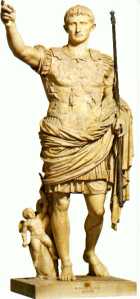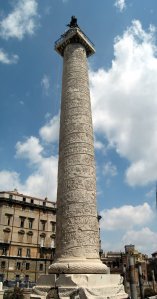Here is another brilliant essay from yours truly. Am I proud of this and the last few? No. Are they earning me an A in a class I detest? Yes. So here it is. Another brilliantly bullshitted piece of work from Becky “makes-shit-up-better-than-anyone” Walker. Without further ado, I give you “Read a Fairy Tale, Find a Value.”

Betrayal is how The Arabian Nights begins. It is a betrayal of such magnitude that it births the rest of the story into existence. The betrayal of one unfaithful spouse leads to the revelation of another, which leads to a King who seeks “refuge from women’s malice and slight” (7) by marrying anew each night and having his ‘wife’ executed each morn, least she dishonor him the next day. Three years later, this leads a young girl to offer herself as ‘a ransom for the virgin daughters of Moslems and the cause of their deliverance from his hands” (8). In order to forestall her death, Scheherazade, for that was the girl’s name, begins to tell tales, each leading to the next, and thus, The Arabian Nights is told. Every culture has values and those values are revealed in the culture’s literature. Just as one will find that the Western European culture values childhood by reading the stories of Hansel and Gretel or Little Red Riding Hood, or beauty by reading Sleeping Beauty or Snow White, so will reading through the introduction and the first two tales Scheherazade tells the King, The Fisherman and the Jinni and The Ensorceled Prince, reveal to the observant reader values which are important to the Islamic culture; the values of faithfulness, justice, and cleverness.
It is clear from the very beginning that faithfulness is highly valued in the Islamic culture. Before the tales truly begin, we are introduced to two kings whose wives are both unfaithful. Shah Zaman, upon seeing the adultery of his queen, was overcome with “excessive grief” (2) and his health began to suffer. When his brother, King Shahryar, had his wife’s unfaithfulness revealed to him, he cried, “By Allah, life is naught but one great wrong” (5) and together the brothers left their kingdoms until they could find another who shared their “calamity” (5). After finding such a one (who, the kings said, had suffered a “greater mishap” (7) than they), King Shahryar returned to his kingdom with the aforementioned vow which led Scheherazade to tell her tales. The second of her tales features yet another example of unfaithfulness. Again a man, this time a young Prince, had been “cockolded” by his wife. When he saw the betrayal with his own eyes, he was mad with grief. Repetition of a theme reveals its importance and thus, it is revealed that in the Islamic culture, as in many others, unfaithfulness is a thing to be dreaded and avoided while faithfulness is something to be valued and valued highly.
As faithfulness is valued, unfaithfulness is met with justice, another value the Islamic culture merits highly. Shah Zaman enacts the death penalty upon his adulterous wife and her lover immediately upon discovery. King Shahryar commands his Wazir to take the Queen and “smite her to death for she hath broken her plight and her faith” (7). The young Prince who was betrayed by his wife is unable to enact his own justice as she, through dark magic (another betrayal, this time of Allah himself), turned his lower body to stone. However, in his stead stands a Sultan, who upon learning of his plight, promotes the cause of justice by restoring the Prince to health, his people to humanity, and his kingdom to its form, and also by bringing the sorcerous to justice by ending her life. These punishments, harsh as they are by modern standards, show how deeply the Islamic culture values justice.
Unfaithfulness leads to justice and justice to the manner in which it is enacted and that is through cleverness. Cleverness, Arabian Nights reveals, is also seen as a virtue. It is, perhaps, valued higher than the others as its theme is repeated more often – in every tale, in fact. It first appears in the introduction. The two kings, while searching for one who had shared the injustice of infidelity, come upon a Jinni who has stolen away a woman on her wedding night and has kept her locked away at the bottom of the sea so that no man may have her but himself. In retribution to such a heinous act, she has taken over 570 lovers saying, “Of a truth this Ifrit bore me off on my bride night…that I might remain chaste and honest, quotha! that none save himself might have connection with me. But I have lain under as many of my kind as I please” (7). Scheherazade, before going into the King’s chamber, told her sister, “Note well what directions I entrust to thee!” and proceeds to instruct her in how to convince the king into letting Scheherazade tell a story, “delectable and delightsome” (12). Her first tale is The Fisherman and the Jinni, which tells of a fisherman who finds a stoppered bottle while he is fishing. He removes the stopper, releasing a Jinni who had sworn to kill whomever opened the bottle. The fisherman pleads and begs the Jinni to spare his life but the Jinni is adamant that the fisherman must die. It is only when the fisherman is able to trick the Jinni into returning to the lamp, using the old “How didst though fit into this bottle which would not hold thy hand…I will never believe it until I see thee inside with my own eyes” trick, that he is saved (16). The Sultan, who released the young Prince from his curse in The Ensorceled Prince, also uses trickery to enact justice. He pretends to be a slave (the infirm lover of the adulterous woman), convincing the sorcerous queen to restore the Prince to his previous mobility, the people of the Prince’s kingdom to their rightful forms (having previously turned them into fish) and his kingdom also to its rightful form (from a pond back into a kingdom), before revealing his trickery and ending her treacherous life. Thus, in each story, cleverness, or ingenuity, plays a pivotal role, which communicates to us how highly it is valued.
Faithfulness. Justice. Cleverness. Three values which, as revealed by The Arabian Nights, are highly regarded in Islamic culture. Just as a pure heart and kindness to strangers is a cultural value seen in Grimm’s Fairy Tales, so are faithfulness, justice, and cleverness seen as cultural values throughout the tales of The Arabian Nights.
Works Cited:
Sir Richard Burton. The Arabian Nights. 21 September, 2010. <http://www.library.cornell.edu/colldev/mideast/arabnit.htm#BULL> (page numbers come from cutting and pasting into OpenOffice, Font: Times New Roman, Font size: 12)




















